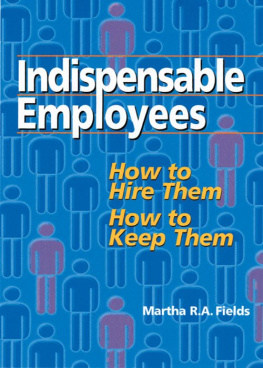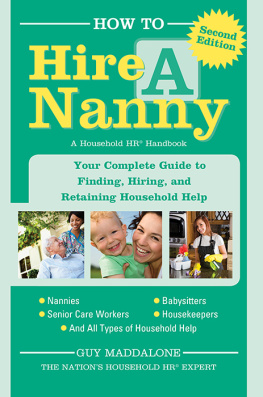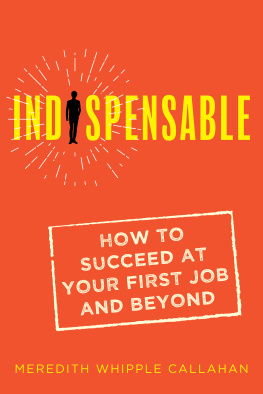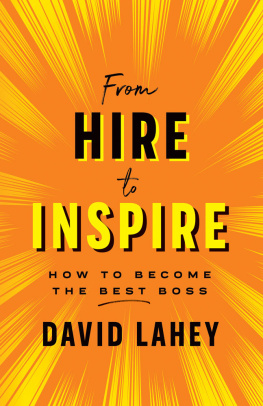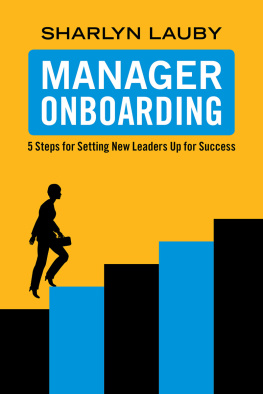

Copyright 2001 by Martha R.A. Fields
All rights reserved under the Pan-American and International Copyright Conventions. This book may not be reproduced, in whole or in part, in any form or by any means electronic or mechanical, including photocopying, recording, or by any information storage and retrieval system now known or hereafter invented, without written permission from the publisher, The Career Press.
INDISPENSABLE EMPLOYEES
Edited by Jodi Brandon
Typeset by John J. O'Sullivan
Cover design by Fanzone Design Solutions
Printed in the U.S.A. by Book-mart Press
To order this title, please call toll-free 1-800-CAREER-1
(NJ and Canada: 201-848-0310) to order using VISA or MasterCard,
or for further information on books from Career Press.

The Career Press, Inc., 3 Tice Road, PO Box 687
Franklin Lakes, NJ 07417
www.careerpress.com
Library of Congress Cataloging-in-Publication Data
Fields, Martha R. A.
Indispensable employees : how to hire them, how to keep them / Martha R. A. Fields.
p. cm.
Includes index.
ISBN 1-56414-516-6 (pbk.)
1. Employee retention. 2.EmployeesRecruiting. 3. Organizational change. 4. Manpower planning. I. Title.
HF5549.5.r58 F54 2001
658 .311dc21
00-052991
www.redwheelweiser.com
www.redwheelweiser.com/newsletter
Acknowledgments
Writing a book is a bit like having a baby. To borrow from a few cliches, with regard to this book's conception, it took two to tango and as the African proverb tells us, it takes a village to raise it. Quite a few people helped me to conceive this book and a very large village helped me to raise it. My wonderful and devoted parents, Betty and Leonard Mervin, taught me that anything is possible if you believe in it and work hard to obtain it. Cira Mervin, my stepmother, reminded me along the way to remain focused and remained a support for me to hang in there. My 10 brothers, sisters, and stepbrothers and stepsisters, as well as their spouses and children, also pitched in and some even helped with the research and various aspects of this book. Thanks Adrienne Mervin, Betty Graves, Dana Mervin, and Sharon Brown.
My immediate family, Shawna Fields, Dr. Richard K. Fields, and Michael Fields, had to live with me through this process, and they provided me with the rock-solid family foundation needed to produce this book. My precious 10-year-old Shawna Imani, whose name means little wise one and faith, always gives me numerous insights into the world and she is what we have to look forward to with regard to the workforce of tomorrow.
Mrs. Gloria Battle, Joyce Frith, Martha Hofmann, Jeff Kosberg, and Penha Pereira helped me balance work life during a hectic time in my existence. Close colleagues and friends stood by my side throughout this process, and I will be forever grateful for their kind and critical words. Thanks to Dr. Barbara Addison Reid, Janine Fondon, George Kaye, Juliette Mayers, Ron Leavell (God rest his soul), Mongalam Srinivasan, Alesia Wilson, Maureen Alphonse Charles, Nina and Robert Miller Browne, and Norman Shakespeare and Carmon Cunningham of the National Black MBA Association (Boston chapter).
A CEO is only as good as his or her staff, and I feel that my success and that of this book is due in large part to the blood, sweat, and tears of the Fields Associates staff (both past and present). Although the list is long, I want to say a very special thanks to some of the people who worked tirelessly and gave of their mind, body, and soul to this project: Yolanda Brown, who has a grace and presence that inspires people to want to excel; Deane Coady, who is a phenomenal thinker, trainer, and all-around decent person; and others who have contributed in some way to the book, including Robin Small, Mari Vazquez, Jessica Tamburrino, John Dougherty, Bettina Elliott, and Lisa Eldridge, one of the most creative persons I know. Ken Lizotte, Roberta Fitzsimmons, Juliet Brudney of The Boston Globe, and Sal Sagaresce were instrumental in providing the necessary guidance needed to see this book through from concept to reality.
A support mechanism of colleagues, friends, and clients is essential in the birthing process of a book. I can't thank enough the many colleagues and clients from around the country who were so willing to tell their stories and share quotes and interesting best and radical practices. Special thanks to Mary Aceto of Boston Coach, Polly Price, Carolyn Everette, Jackie Benson Jones, Jamie Hoyte of Harvard University, Marilyn Fuller of Texas Instruments, Robin Browne of the Four Seasons Hotel, Regina DeTore of Sepracor, Inc., and Judy Weil of NEHRA/ The Society of Human Resource Management.
Finally, a special thanks to the staff at Career Press who were present and center in the delivery room and have provided me the opportunity to publish what I know will be a happy, healthy book to help people recruit and retain indispensable employees in these unprecedented times.
Martha R.A. Fields
January 2001
Contents
From Disposable to Indispensable Employees:
The 1980s to the 2000s
Growing Your Own Employees:
Utilizing Internal Staff to Fill Positions
The future is bright for indispensable employees with thick skins, nerves of steel, and fresh eyes.
These new-age thinkers know how to translate vision into realities, rejoice in change, and are masters at making people see the universe as their playground.
They thrive on inspiring people to achieve their maximum potential and don't hesitate to venture beyond the shores of their minds to tap uncharted oceans.
Martha R.A. Fields
Introduction
I started my career in management and human resources more than 20 years ago. Of course, I was only 10 years old then; human resources and the world were very different. There were no Americans with Disabilities Act (ADA), Family Medical Leave Act (FMLA), I-9 forms, or e-mail. Companies such as IBM practiced a no-layoff policy. There were rotary phones, busy signals, and no voice mail. IBM Selectric typewriters and correction tape, not computers, were standard desk attire. There was no workforce flexibility. You worked from nine to five. It was a way to make a living. You had flexibilityin choosing what time to go for lunch. The flex choice options were to eat at noon or 1 p.m.
Those were the good ol days. Managing people in today's workforce has become complex. As a vice president at a high technology firm recently told me, It used to be all I had to do to manage people was to make sure my staff got their jobs done. Now, not only do I have to make sure they do that, but I'm playing many other roles: psychologist, parent, career coach, daycare and eldercare advisor, you name it!
Not long ago, I was dealing with a client on a very interesting employee relations issue: workers sleeping on the job. The dilemma was that he knew certain staff were sleeping on the job, but didn't want to fire them. As the manager explained to me, I feel torn. If my employee is breathing I want to keep him. Do you know how long it will take to find a replacement if I let him go? Although he sleeps on the job and I may only get six and not eight hours out of him, that's better than having no one.
Ironically, later that week, I was driving in my car and heard a radio DJ telling people about what to do if they were found sleeping on the job. His advice was to say one of two things as you emerged from dreamland: (1) The woman at the Red Cross told me this could happen when I gave blood. (2) Amen, followed by, Please forgive me for saying my prayers at work. Yes, management life isn't what it used to be.
Next page
